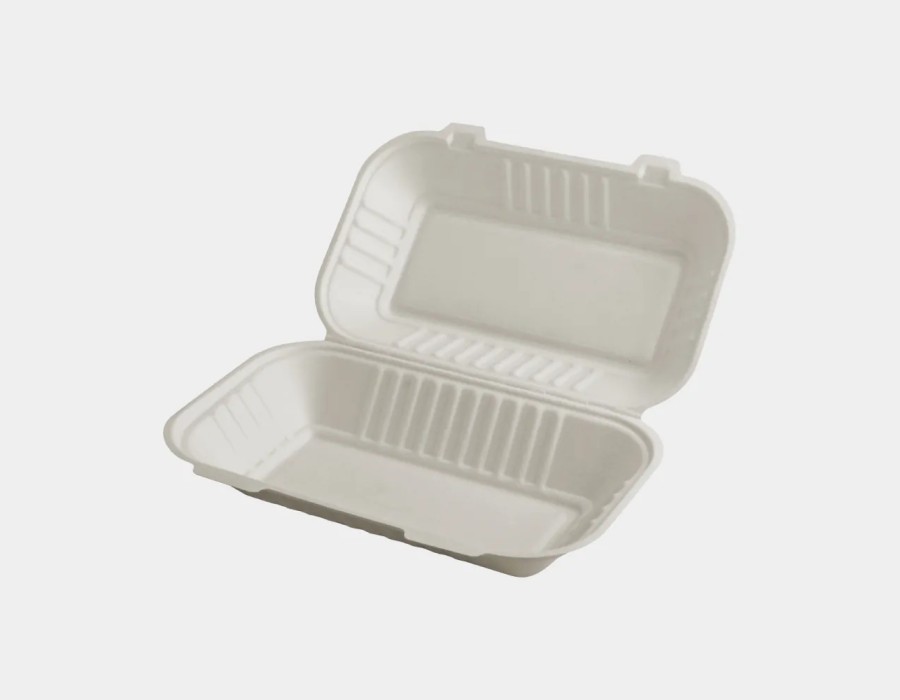In recent years, sugarcane food containers have emerged as a sustainable alternative to plastic packaging, offering an eco-friendly solution for the food industry. But how exactly are these containers made? The journey of a sugarcane food container begins in the fields and ends as a sturdy, compostable product that enhances both food safety and environmental sustainability. In this blog, we'll take a closer look at the process of how sugarcane food containers are made, from the fields where the sugarcane grows to the final product on your table.
Cultivating Sugarcane
The journey starts in the sugarcane fields. Sugarcane is a tall, fibrous plant primarily grown in tropical and subtropical regions. It is a renewable resource, known for its rapid growth, making it an ideal material for sustainable packaging solutions. Once harvested, sugarcane is processed to extract its juice, which is used for sugar production.
Creating Bagasse from Sugarcane
After the juice is extracted from the sugarcane stalks, what remains is a fibrous byproduct called bagasse. In many industries, this bagasse would be discarded as waste, but in the case of sugarcane food containers, it is repurposed as the key raw material. Bagasse is rich in cellulose, making it an excellent candidate for creating durable and biodegradable products.
Pulping and Processing the Bagasse
To transform bagasse into a usable material, it undergoes a pulping process. The fibers are broken down and mixed with water to create a slurry. This slurry is then cleaned and refined to remove any impurities. The resulting pulp is rich in natural fibers, which are critical for giving the containers their strength and durability.
Molding the Containers
Once the bagasse has been processed into pulp, the next step is to mold it into food containers. The pulp is poured into molds that are shaped like different types of containers, such as bowls, plates, or clamshell boxes. These molds apply heat and pressure to the pulp, forming it into a rigid and durable structure.
This molding process also ensures that the containers are sturdy enough to withstand the rigors of food service, whether it's holding hot, cold, or even liquid-based foods.
Drying and Finishing
After molding, the sugarcane containers are dried to remove any excess moisture and strengthen their structure. The drying process typically involves the use of heat, which helps to harden the material, making it resilient and long-lasting.
Once dried, the containers undergo finishing touches, such as trimming or smoothing rough edges, to ensure that they are safe and comfortable for use. Some containers are coated with an additional biodegradable layer to enhance water and oil resistance.
Packaging and Distribution
After the production process is complete, the finished sugarcane containers are packaged and prepared for distribution. Since these containers are biodegradable and compostable, they offer an environmentally friendly option for restaurants, cafes, catering services, and other food businesses. They are now ready to be used by businesses looking to reduce their carbon footprint while providing eco-conscious packaging for their customers.
The Environmental Benefits of Sugarcane Containers
The entire production process of sugarcane food containers is designed with sustainability in mind. By repurposing bagasse, sugarcane containers minimize waste from the sugar industry and reduce the need for virgin materials like plastic. Additionally, because these containers are compostable, they can break down naturally without harming the environment, unlike traditional plastics, which take hundreds of years to decompose.
Moreover, the production of sugarcane containers has a significantly lower carbon footprint compared to plastic, contributing to a more sustainable and circular economy.
Conclusion
The creation of sugarcane food containers is a testament to the power of innovation in sustainable packaging. From the fields where sugarcane is harvested to the final product that holds your meal, these containers offer a practical and environmentally responsible alternative to plastic. As more businesses and consumers prioritize eco-friendly solutions, sugarcane food containers are playing a pivotal role in reducing plastic waste and moving towards a more sustainable future.





Comments